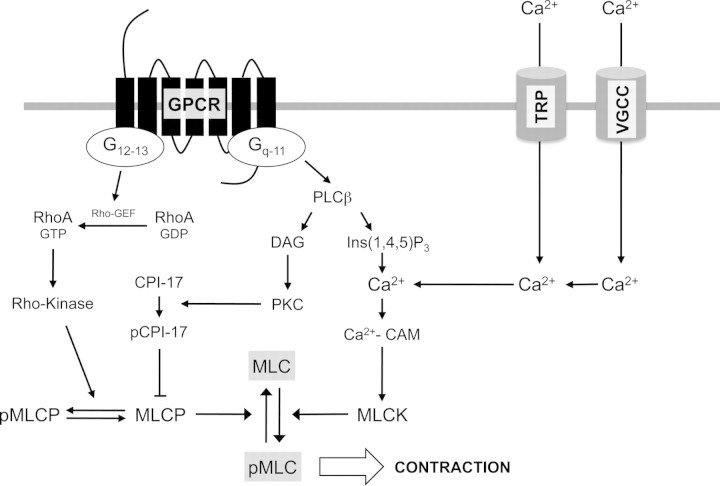Figure 1.
Intracellular signalling underlying vascular smooth muscle cells contraction. Contraction is induced by the increased phosphorylation of 20 kDa myosin light chain (MLC). Activation of G protein-coupled receptors (GPCR) triggers both Ca2+-dependent phosphorylation of MLC and calcium facilitation inhibiting MLC dephosphorylation. Gq-11 protein activates phospholipase C (PLC) and induces intracellular Ca2+ rise through inositol (1,4,5) triphosphate (Ins(1,4,5)P3)-sensitive endoplasmic reticulum stores. This adds to extracellular Ca2+ entry through voltage-gated calcium channels (VGCCs) and transient receptor potential (TRP) channels. The Ca2+-Calmodulin complex (Ca2+-CAM) induces the phosphorylation of MLCK. The second product of PLC, diacylglycerol (DAG), activates protein kinase C (PKC), which, through its substrate CPI-17, inhibits MLCP, and thus, MLC dephosphorylation. G12-13 activates Rho guanine nucleotides exchanging factor (Rho-GEF) that activates RhoA protein through GDP exchange to GTP. GTP-bound Rho activates Rho-kinase which, through MLCP phosphorylation, inhibits MLC dephosphorylation.

